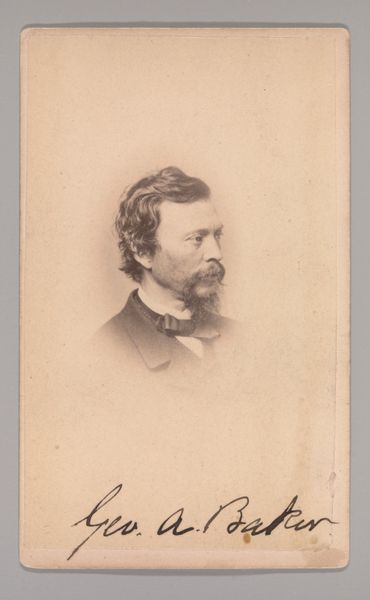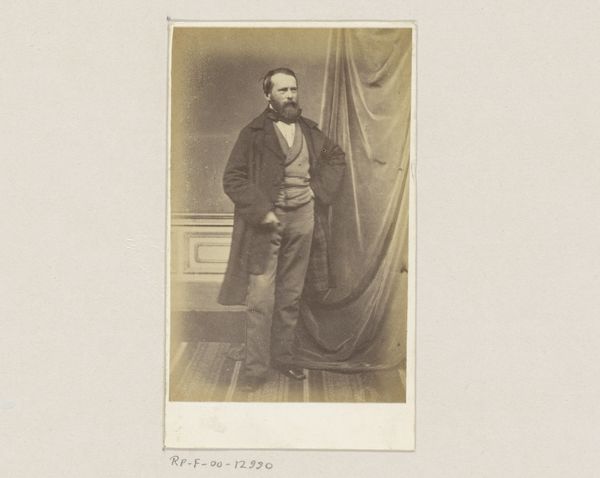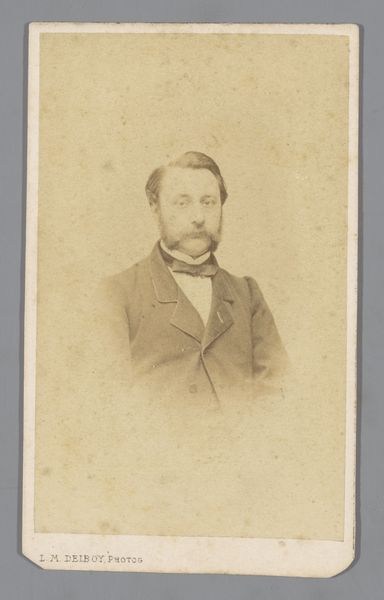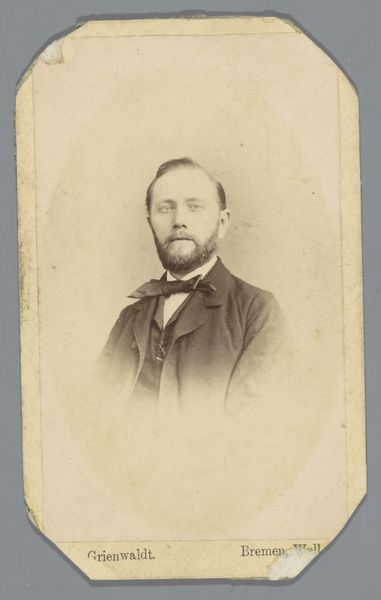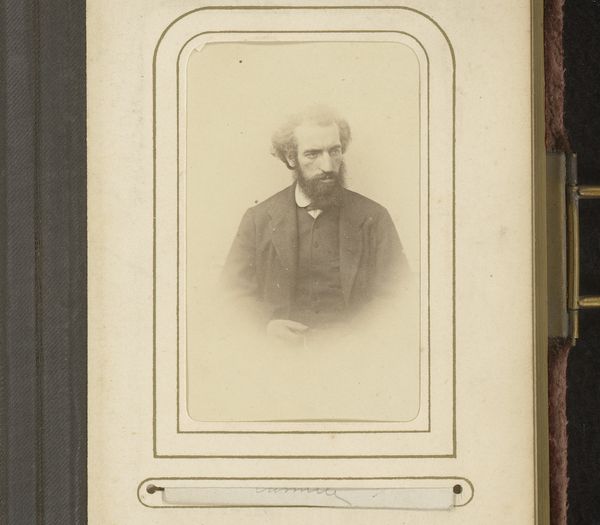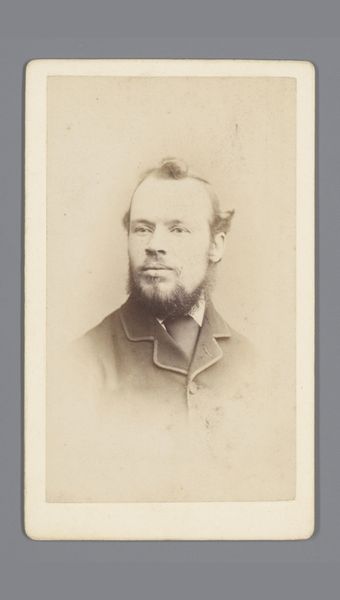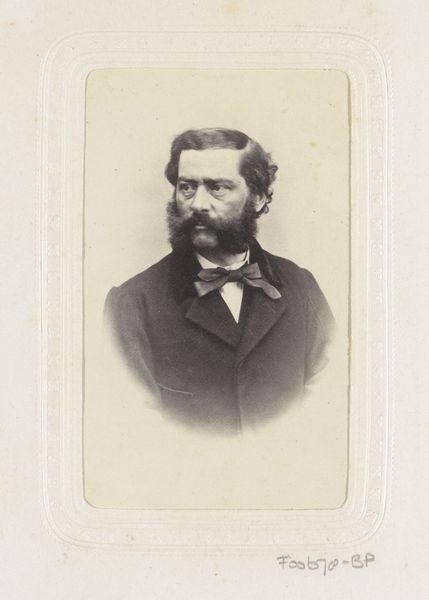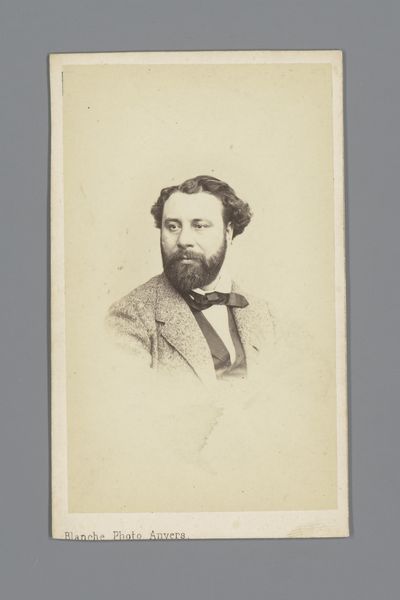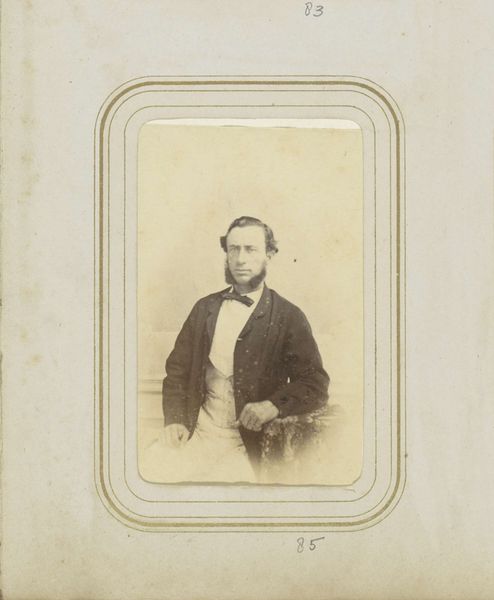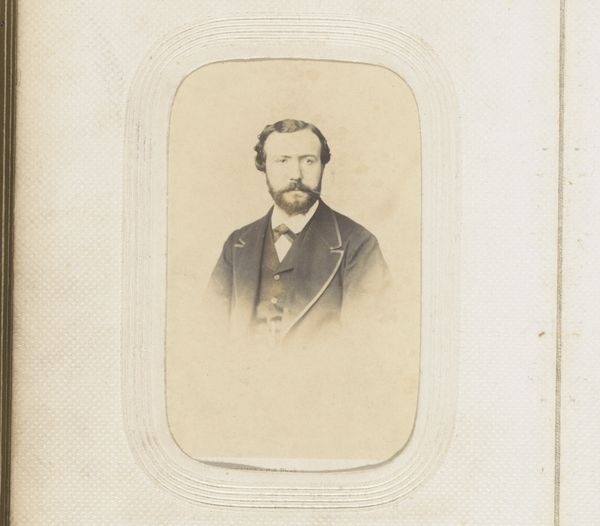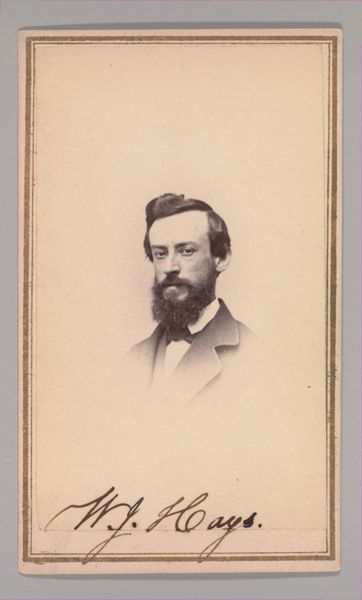
photography, albumen-print
#
portrait
#
16_19th-century
#
photography
#
portrait reference
#
19th century
#
portrait drawing
#
albumen-print
Dimensions: height 87 mm, width 53 mm
Copyright: Rijks Museum: Open Domain
Editor: This albumen print from somewhere between 1850 and 1900, titled 'Portret van een man met snor, baard en bril' and attributed to A. Stretti, really strikes me. It feels very formal and controlled, doesn't it? I'm curious, what historical context am I missing that shapes your interpretation of this piece? Curator: Considering its historical context, this portrait exemplifies the rise of photography as a democratizing force in the 19th century. Think about it – suddenly, portraiture, once reserved for the elite, became accessible to the middle class. Who could now commission images to solidify their social standing and family history? And what kind of attire is he sporting? Editor: I think I see a hint of military garb there. Maybe this image had something to do with public perception of people in service? Curator: Precisely. Uniforms were a symbol of patriotism and status. This image would have contributed to, and been shaped by, prevailing societal values. How do you think the medium of photography itself impacted the way people viewed the subject? Editor: Because photography was considered objective, viewers might have perceived him as a truly representative example of masculinity or citizenship. Curator: Exactly. This "objectivity," regardless of whether it’s fully factual, lent authority and authenticity. Moreover, institutions like family and government utilized images to solidify narratives around things like national identity. Do you agree that seeing him with spectacles in itself marks him in the image with an amount of implied learnedness or literacy? Editor: Oh yes, definitely. Thank you; I’m starting to see all the social forces at play! Curator: Indeed. This photograph invites us to consider not just who is being represented, but also the historical power of imagery itself.
Comments
No comments
Be the first to comment and join the conversation on the ultimate creative platform.

